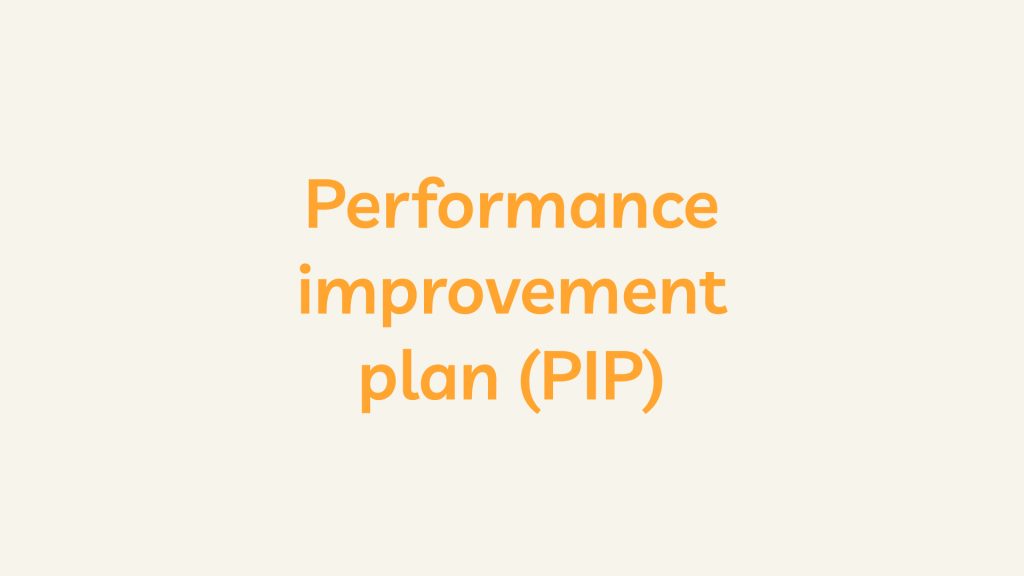What is a Performance improvement plan (PIP)?
A Performance Improvement Plan (PIP) is a strategic and formalized approach that organizations deploy to support employees who are facing challenges in meeting established performance standards. It is a constructive tool aimed at helping employees identify areas for improvement and providing them with a structured plan to enhance their job performance. This comprehensive guide delves into the key components, best practices, and considerations for implementing a PIP.
Key Components of a Performance Improvement Plan
- Identification of Performance Issues:
- The PIP process initiates with a thorough identification of specific performance issues or deficiencies that have been observed in the employee’s work. This may include aspects such as missed deadlines, quality concerns, or failure to meet key performance indicators.
- Clear and Measurable Goals:
- A fundamental element of the PIP is the establishment of clear, specific, and measurable performance goals. These goals are designed to address the identified performance issues and are intended to guide the employee toward achieving the required performance standards.
- Timeline and Duration:
- A well-defined timeline is a crucial aspect of the PIP. It outlines the plan’s duration and specifies when the performance goals are expected to be achieved. Typically ranging from 30 to 90 days, this timeline provides a realistic framework for improvement.
- Support and Resources:
- Organizations may offer additional support and resources to facilitate the employee’s success during the PIP. This can include targeted training, mentoring, coaching, or access to tools and resources contributing to performance enhancement.
- Regular Check-Ins and Feedback:
- Regular check-in meetings are scheduled between the employee and their supervisor or manager throughout the PIP. These meetings are opportunities to discuss progress, address any challenges the employee faces, and provide constructive feedback on their performance against the established goals.
- Consequences and Next Steps:
- The PIP should transparently outline the consequences of not meeting the performance improvement goals. This may include further disciplinary actions, up to and including termination of employment. Additionally, the plan should specify the next steps if the employee completes the PIP, such as returning to regular performance evaluations.
- Documented Communication:
- All communication related to the PIP should be thoroughly documented. This includes the initial identification of performance issues, the creation of the PIP, progress updates, and feedback provided during check-in meetings. Documentation ensures transparency and accountability and serves as a record for potential future actions.
- Employee Input and Agreement:
- Organizations may sometimes involve employees in developing the PIP, allowing them to provide input. Employees’ agreement with the plan signifies their commitment to making necessary improvements. However, a PIP may be implemented without employee input in urgent situations.
Best Practices and Considerations
- Fair and Consistent Application:
- Organizations should apply PIPs fairly and consistently across the workforce. Ensuring consistency in implementing PIPs helps maintain a positive and equitable work environment.
- Constructive Feedback:
- Feedback provided during the PIP should be constructive and focused on development. Clearly communicating expectations and offering guidance on improvement contribute to a more supportive and effective PIP.
- Review and Revision:
- It is essential to review the progress of the PIP regularly. The plan can be revised to address unforeseen challenges or adapt to changing circumstances if needed.
- Legal Compliance:
- Organizations must ensure that PIPs adhere to legal and regulatory requirements, including compliance with employment laws and anti-discrimination regulations.
- Communication Skills Development:
- In cases where communication skills are identified as an area for improvement, the PIP may include specific training or resources to enhance these skills.
Conclusion
A Performance Improvement Plan, when implemented thoughtfully, serves as a valuable mechanism for employee development and growth. Organizations can support employees in overcoming challenges and meeting performance expectations by providing a structured pathway for improvement. It is crucial for organizations to approach PIPs with a focus on collaboration, fairness, and a genuine commitment to fostering a culture of continuous improvement within the workplace.
